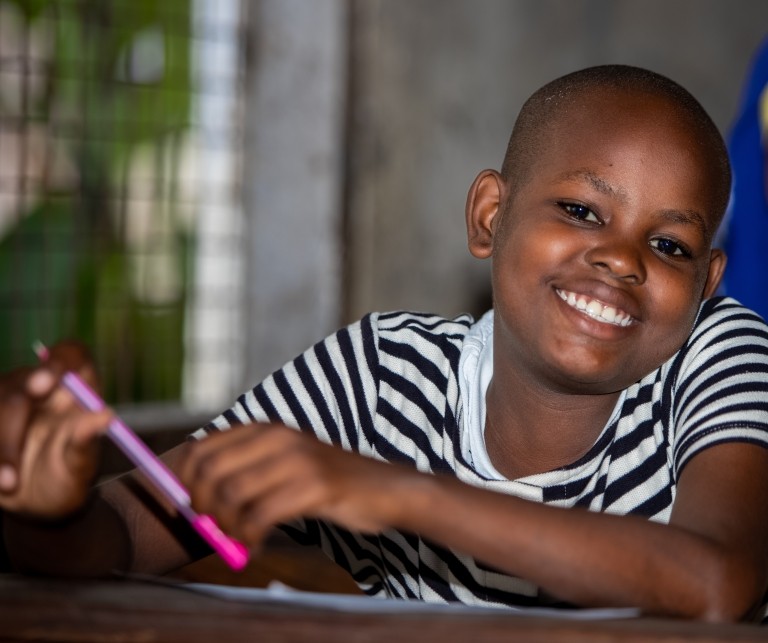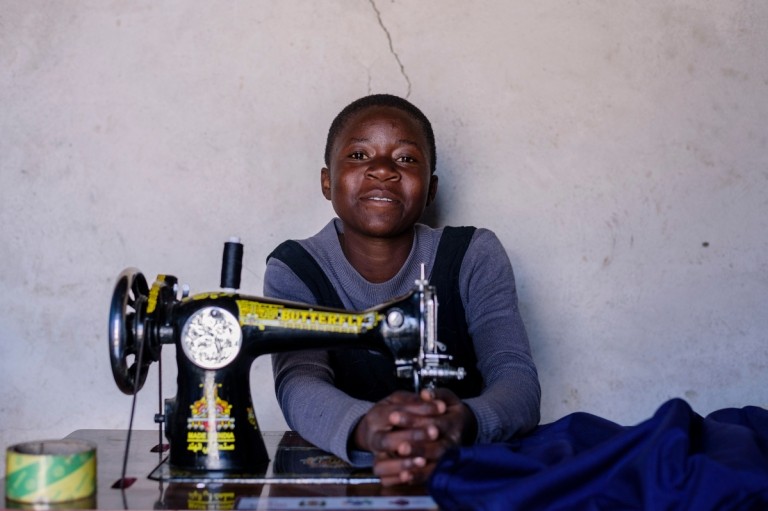Blog
Preparing Africa’s youth for the future

On May 25, 1963, the Organisation of African Unity (OAU) was founded as the precursor to the African Union. Each year, Africa Day commemorates the OAU’s founding and celebrates African unity and identity. This year’s theme for Africa Day focuses on education and building resilient education systems for increased access to inclusive, lifelong, and high-quality learning in Africa.
For many, education primarily brings to mind classrooms, books and tests. These are foundational elements of education, but education includes much more than traditional primary and secondary schooling. Importantly, it starts before primary education with early childhood development.
Research shows that early childhood development and education play a major role in future well-being. The first five years of a child's life are critical to their ability to reach their full potential. Besides impacts on children, on a broader scale, inadequate early childhood development has lasting societal implications. Likewise, entire communities benefit when children enjoy adequate nutrition, health care, security and opportunities to play and learn.
One example of this is in Madagascar’s mica mining regions where childcare is a major factor for women in the sector. Without childcare options, women from mining communities must improvise, often skipping work. This means vital income is lost, which puts additional pressure on the family.
Through the Madagascar Shines project, funded by the U.S. Department of Labor, Pact and our partners are working with local authorities, communities and other stakeholders to co-develop childcare solutions that support children’s development. We train caregivers, teachers and educators on children’s rights and child protection. Through Pact’s community-based savings and loan program known as WORTH, we provide mothers with information and resources on positive parenting, health topics and availability of health services, while increasing their economic stability. We also engage mica exporters to encourage child-friendly policies and support childcare options for their workers.
These efforts are already making an impact. In 2024, across four mining communities, parents have committed to enrolling 265 children in childcare centers and six mica processing centers have agreed to undertake a pre-feasibility analysis for the implementation of daycare centers.
By strengthening families and caregivers’ capacities, developing structures and systems to support early childhood development and applying a family-based approach, we are helping to ensure children are healthy, safe, stable and engaged in early learning opportunities so they can reach their full potential.
Another vital aspect of education is vocational training, a critical type of education that prepares youth for a particular profession.
In many mineral-rich regions of Africa, artisanal and small-scale mining (ASM) provides livelihoods for thousands of people. Despite the litany of dangers to children in ASM, many children perform a variety of jobs in and around mine sites. To end child labor in mining, one of the strategies that Pact utilizes in mining communities in the Democratic Republic of Congo and Zambia is apprenticeships for older youth.
For example, in Zambia’s Central and Copperbelt provinces, youth make up most informal miners. Pact’s child labor reduction project, funded by the London Metal Exchange, improved access to vocational training for youth to provide alternative, safer livelihood options. Youth were connected to mentors to learn trades from tailoring and food processing to mechanics and hospitality. Throughout the three-year project, which ended in December 2023, 110 youth were enrolled in marketable livelihood programs that provided them with the knowledge and skills they needed to succeed and, importantly, kept them out of the mines.

Similarly, in South Africa, Pact and our partners are bolstering young women’s job prospects and entrepreneurial success through intensive economic strengthening, including vocational training. Through the USAID-funded ACHIEVE project, we use labor market assessments to identify job opportunities, in-demand skills and skill gaps directly tied to vocational interests in each area. We then provide relevant skills training and development initiatives for young women that foster their employment and entrepreneurship opportunities. Beauty product manufacturing, ago processing, hairdressing and digital marketing are some of the industries young women have received training in. We also provide CV composition, career guidance and job portal registration to further prepare them for employment. Through it all, the young women are connected to critical social and business networks, including the public and private sectors, for well-rounded support. So far, more than 8,500 young women have been enrolled in the program, with 3,239 completing foundational skills training, 623 progressing to marketable skills training and 347 linked to entrepreneurship/employment pathways.
Early childhood development and vocational training play important roles in building toward the future. We see this in our work not just in the examples above, but also in Tanzania, the Democratic Republic of Congo and beyond. To educate African youth fit for the 21st Century, we must also think about ways to incorporate digital literacy into programming and provide vocational training for jobs of the future, including those in science, technology and engineering. By thinking holistically about education, focusing on both in-school and out-of-school education, we can achieve the African Union’s vision of education for all.
Mirana Rakotosamimanana and Christel Jacob also contributed to this blog.